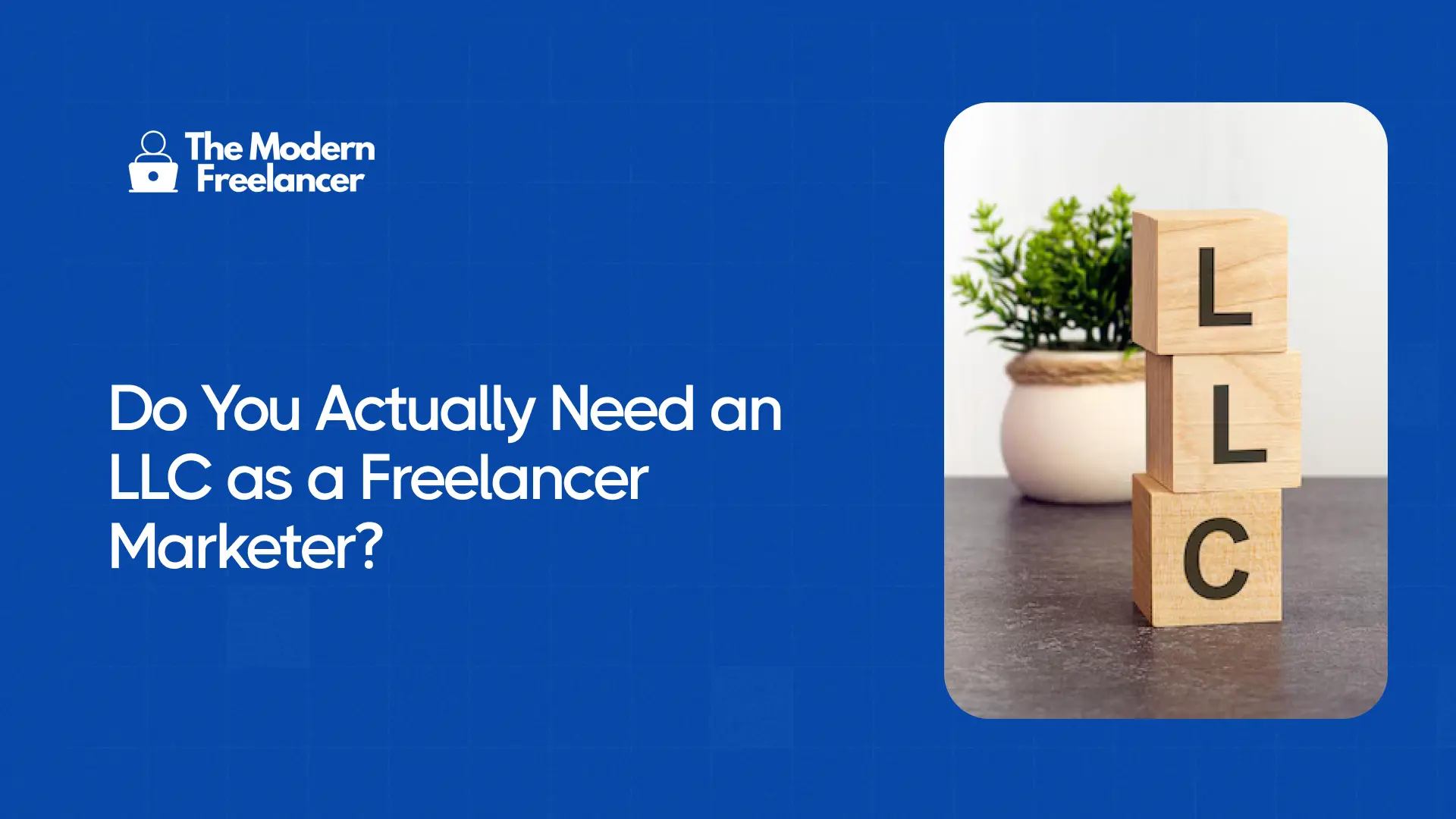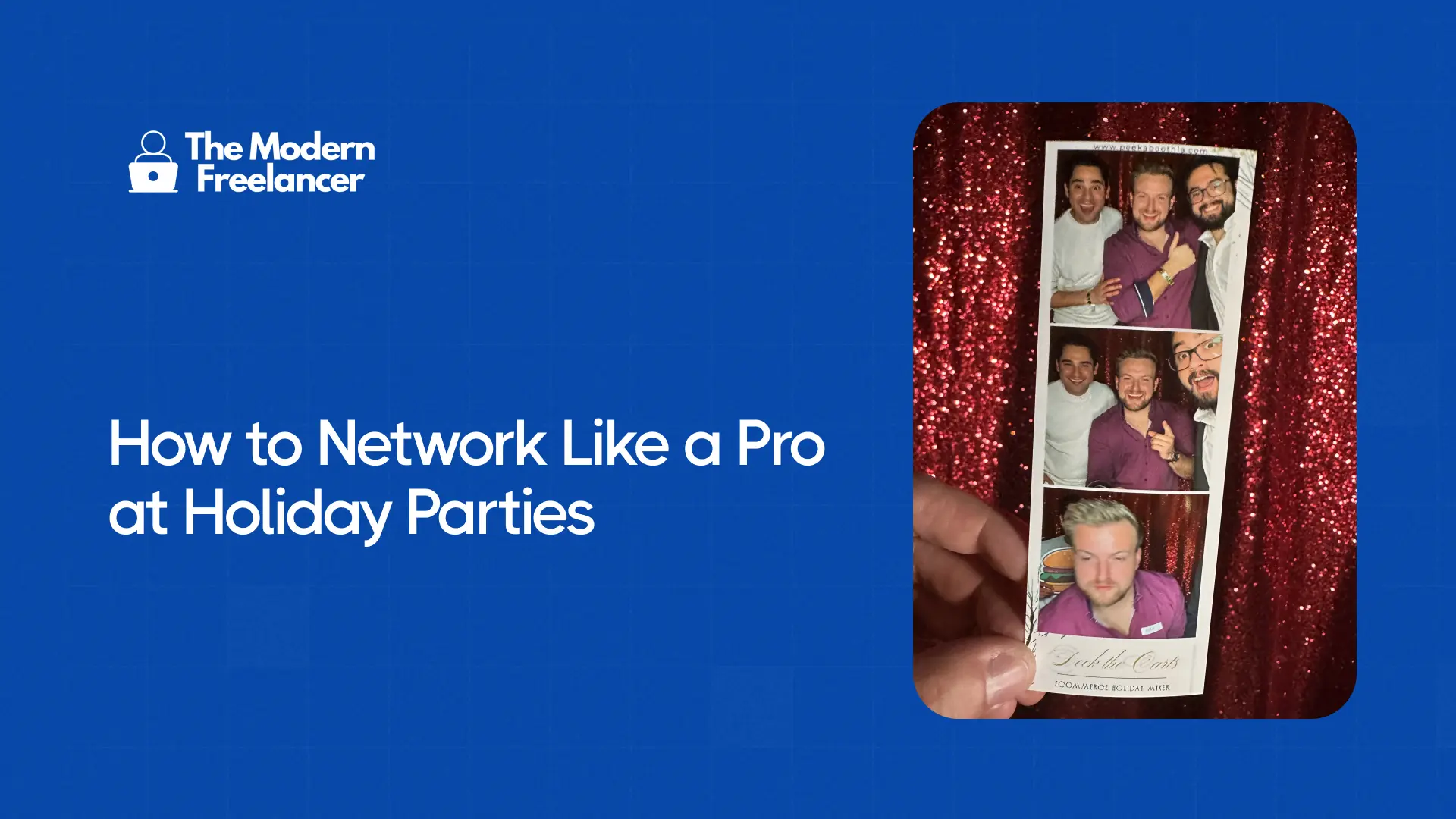How to Start Freelancing (a Step-by-Step Guide)
How to start freelancing with no experience. This comprehensive guide covers freelancing basics, plus tips on breaking free from golden handcuffs.
.webp)
Heads up: Some of the links below are affiliate links, which means I may earn a small commission if you choose to use them — at no extra cost to you. I only recommend tools I personally use and trust.
Freelancing can be incredibly rewarding. You get the freedom to work on your terms, choose your clients, and scale your business. But with freedom comes responsibility, and starting comes to finding clients who respect your time and your worth.
This guide is a step-by-step process of building a freelance business that attracts the right clients. You’ll learn how to secure your first clients, strengthen your client relationships, and avoid the stress of dealing with high-paying but toxic projects.
How To Start Freelancing with No Experience in 6 Easy Steps
Starting freelancing from scratch doesn’t mean you can't succeed. As I noticed, many successful freelancers began with zero experience. Below are the steps to help you gain confidence and attract your first clients.
1. Find Your Target Audience
Before you can do any work, you need to figure out who you’re working for. Avoid working with clients who aren’t a good fit for your skills or your values. The first thing I usually suggest is to consider industries where your expertise can solve problems. The more specific you get about your target audience, the better you’ll be able to offer your services.
2. Develop a Pricing Structure
Setting your prices can be tricky, especially if you're new to freelancing. Research the going rates for your services and adjust based on your skill level and the value you can provide. Don’t undervalue yourself to attract clients who might not respect your boundaries. A few common pricing models I suggest include hourly rates, project-based rates, or monthly retainers. Start with a reasonable baseline, but always be prepared to adjust as you gain more experience.
3. Build a Portfolio
Even if you haven’t worked with clients yet, you can still create a portfolio. Start by doing some work for free (for family, friends, or personal projects) to master your skills and show how you apply them. Your portfolio is your first impression, so make sure it reflects the kind of clients and work you want to attract. Such a foundation makes freelancing worth it from day one. This is your chance to demonstrate how you can get the job done and help potential clients understand the work you can do for them.
4. Create a Relationship with Your Client
Freelancing is as much about relationships as it is about skills. Establish a strong rapport with your clients, communicate clearly, and always meet your deadlines. The more you understand their needs, the better you can serve them. Building trust early on leads to long-term clients and even referrals.
5. Network with Other Freelancers
Build a network of other freelancers to get more access to valuable resources, collaboration opportunities, and a community that can help you stay on track. Networking also opens the door for client referrals and partnerships. Thus, you can grow your business faster.
6. Continue to Find New Clients
Even if you’re doing great with your current clients, always keep the flow. Use a mix of online platforms, word of mouth, and networking to keep your client base growing. Be proactive in seeking out clients and avoid settling for projects that don’t support your business goals.
The Freelancer's Guide to Breaking Golden Handcuffs
As you build your freelancing business, you’ll eventually come across a client who pays well but leaves you feeling drained, frustrated, and underappreciated. Here is my experience on this issue.
Last month, a freelancer asked me: "Alex, I have a client who pays me a huge retainer but treats me like garbage. I’ve been honestly miserable but I’m conflicted because of the money. How should I approach it?”
My answer was immediate: "Fire them. Today."
Here's why I'm so confident about that advice: Two years ago, I was in the exact same situation. I had a client paying me $40,000 per month.
(You read that right, $40k a month, that’s an insane amount of money, and the most I’ve ever charged freelancing.)
That’s more than some freelancers make in a year. But the fact is, the value was there and I drove millions of dollars of extra revenue for this ecommerce brand during my time with them.

But then I fired him.
Here's the story of the most expensive lesson I ever learned about client relationships.
When this client first approached me, I thought I'd hit the freelance jackpot. $40K/month retainer for paid social and creative strategy. I was managing a small team under me: a paid social freelancer ($6K/month), a creative strategist ($3K/month), and a data analyst ($1K/month). So I was about to pocket $30k a month while doing something I love, growth strategy.
On paper, it looked perfect. In reality, it quickly became a nightmare.
Because he was paying so much, he felt he could "own me."
The Slack messages started at 6 AM and didn't stop until midnight. Weekend calls became the norm. Every conversation began with "I'm paying you $40K a month, so..." followed by some impossible demand.
His management style was simple: never be satisfied. Even when we delivered incredible results, he'd find something to criticize. Even when his business grew, he'd focus on what we didn't do rather than what we accomplished.
The scope creep was relentless. "Since I'm paying you so much, can you also handle a test campaign on Tiktok and Snapchat? And influencer outreach?" The $40K was supposed to cover paid social and creative. By month three, he expected us to run his entire marketing department.
When Money Becomes a Weapon
Here's what I learned about high-paying toxic clients: they use the money as leverage to justify bad behavior.
Every unreasonable request came with the same justification: "I'm paying you more than anyone else, so you should be grateful."
Every boundary I tried to set was met with: "For $40K a month, I expect 24/7 availability."
Every time I pushed back on scope creep: "Maybe I should find someone who appreciates this opportunity."
The worst part? My team was miserable. The paid social freelancer, creative strategist, and data analyst were all fed up with how disrespectful he was on calls. I was paying good people good money to be treated like garbage.
I realized I wasn't running a business – I was running a very expensive therapy session for a toxic founder.
The Final Straw
Black Friday 2023 was our biggest test. We'd been working with this client for five months, and BFCM was make-or-break time.
The results were incredible: 30% year-over-year growth. Best Black Friday in the company's history. Record-breaking sales numbers across every metric that mattered.
I was excited to share the results. Finally, I thought, he'll see the value we're bringing.
Instead, he spent the entire results call finding things to blame us for.
"Why didn't we test this type of creative our competitors did?" "Why weren’t our CPCs lower?" "Why didn't we capture more emails?"
Zero acknowledgment of the 30% growth. Zero credit for the record-breaking performance. Just more criticism and more demands.
That's when it hit me: If he's like this when we're winning, imagine what he'll be like when results slow down or we hit a rough patch. It would be impossible to deal with.
The $40K Email
That night, I wrote the hardest email of my freelance career:
"Hey mate,
I was hoping we could have a brainstorm over the phone, but it's becoming very evident that my team is not the right partner for what [Company] needs. I think we can both agree that the relationship has been very rocky from the start and while BFCM ended up being a big success overall, I don't think we've gotten to a place where the dynamics between our teams are fluid.
I know we both hoped for a very different outcome in this relationship and ultimately coming to this conclusion is extremely saddening and something I have put a lot of thought behind. I take great pride in building long-lasting relationships with brands I work with and founders that have come this far in building their brand from scratch. I have nothing but admiration for you and your team, and I think you guys will be better suited without us.
I am very confident the creative we'll deliver for December will perform great and will put the account in a solid place, but I'm going to recommend we part ways after that...
Best, Alex"
I hit send at 11:47 PM on a Sunday night.
The Aftermath (And Why I Don't Regret It)
Did I panic about losing $40K/month? Honestly, no.
I still had three other clients paying $7K each. The $40K was extra money – nice chunks of cash, but not essential for survival. More importantly, I realized the mental health toll wasn't worth any amount of money.
Within two months, I'd replaced half that revenue with two new clients who:
- Respected boundaries
- Appreciated good work
- Treated my team with respect
- Paid well without using money as a weapon
The best part? My stress levels dropped dramatically. I started sleeping better. My other clients got better work because I wasn't constantly drained by one toxic relationship.
The Hidden Cost of "Good Money"
Here's what most freelancers don't calculate: the opportunity cost of toxic clients.
While I was dealing with constant Slack messages and weekend calls, I was saying no to other opportunities. While my team was getting demoralized by disrespectful treatment, their work quality was suffering across all projects.
That $40K/month was actually costing me money because it was preventing me from doing my best work for everyone else.
The Red Flags I Should Have Seen Earlier
Looking back, the warning signs were there from day one:
Red Flag #1: He talked about previous agencies/freelancers negatively in our first meeting
Red Flag #2: On pitch day, he immediately asked for the price before I could walk him through my ideas
Red Flag #3: He asked for my phone number the the first week we started working together
Red Flag #4: He CC'd multiple people on every email to create pressure
Red Flag #5: He used phrases like "I expect" instead of "I'd love" or "could we"
If you're reading this and recognizing your current client, it's time to have a conversation.
Your Action Step
The main thing to remember when starting freelancing is that you don’t need a decade of expertise or a perfect portfolio to succeed.
The first few months of full-time freelance will test you. You’ll undercharge, overdeliver, and sometimes question whether you made the right choice. But over time, as you find your rhythm, set boundaries, and attract better clients, you’ll realize that freelancing is your freedom.
And that’s where most freelancers get it wrong. They chase high-paying retainers, thinking it’ll make life easier, but instead, they end up trapped by their own success. Remember: You started freelancing for freedom. Don't let a high-paying client steal that from you.
The goal isn't to make the most money possible. It's to make good money while maintaining your sanity, your standards, and your self-respect.
Sometimes the most expensive client is the one you can't afford to keep.
--
Want more freelance tips that actually work?
Subscribe to my newsletter and get actionable freelance marketing strategies delivered to your inbox weekly.



